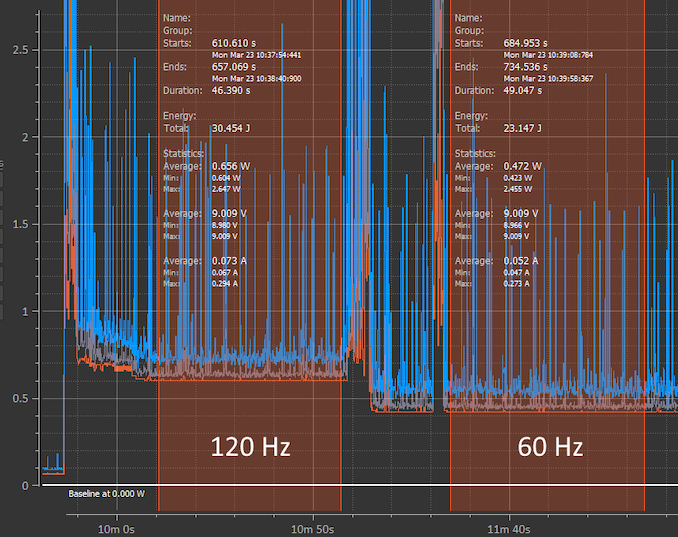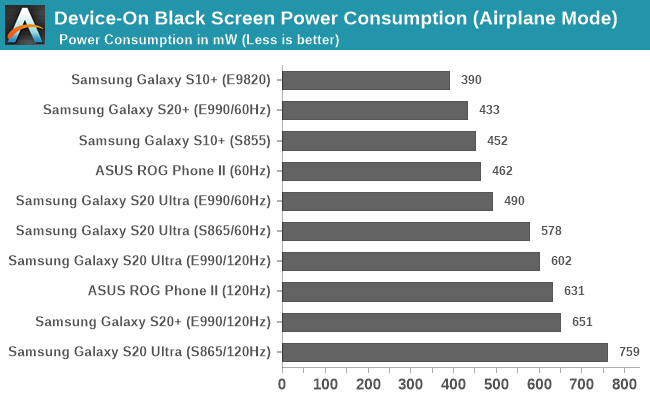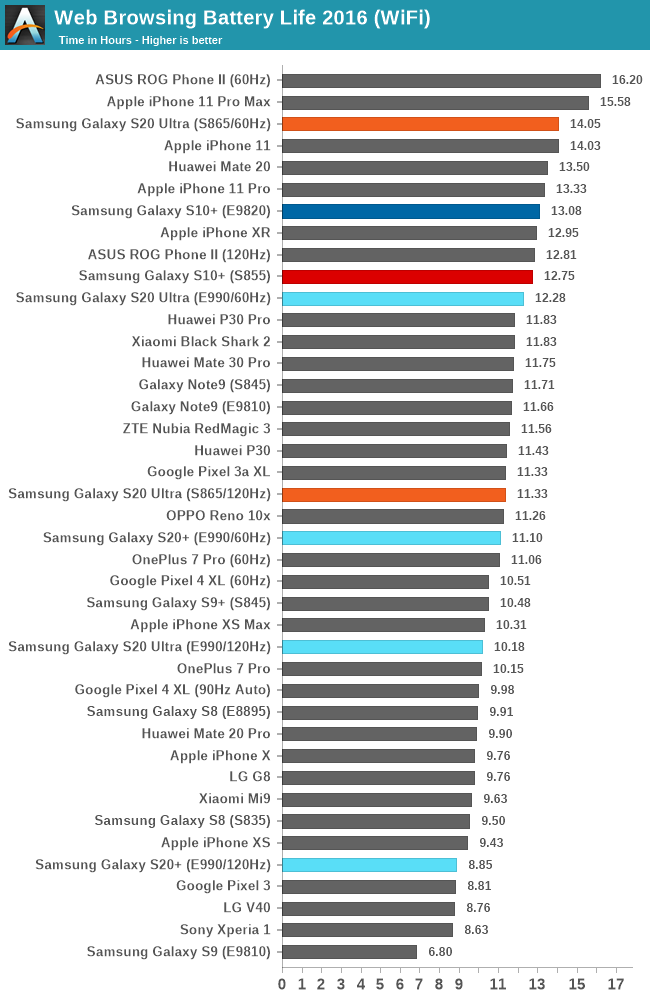Samsung was quite late to the party in equipping its phones with high screen refresh rates. While smaller brands like ASUS, OnePlus, and Razer started offering screens with a 90Hz (or higher) refresh rate as early as 2017, the South Korean smartphone giant stuck to the usual 60Hz on Galaxy flagships. With its 2020 flagship devices, however, the company jumped straight to 120Hz refresh rate, and using one of those phones is quite an amazing experience.
However, a higher screen refresh rate also means higher power consumption and shorter battery life. No wonder, Samsung choose to power its Galaxy S20 series phones with the highest capacity batteries we’ve ever seen inside its flagship smartphone lineup. Our review of the Galaxy S20+ noted that activating the 120Hz refresh rate feature takes a huge toll on the phone’s battery life, but we did not quantify it in absolute numbers. The folks over at AnandTech have now published an extensive analysis showing the impact of a 120Hz refresh rate on the battery life of Samsung’s newest phones.
According to the tests conducted by the popular publication, the 120Hz mode has quite a large impact on the battery life of the Galaxy S20+ and the Galaxy S20 Ultra. The tests were performed on both Exynos 990 and Snapdragon 865 variants of the Galaxy S20 smartphones. In the first image, you can see that baseline power draw in the 60Hz mode was 472mW and the power draw in the 120Hz mode was 656mW.

The power consumption difference of 184mW doesn’t seem like much, but the power consumption over the complete day can be quite high. This test was performed with an all-black screen and the airplane mode turned on. Now imagine the amount of power the 120Hz mode would consume while displaying usual content and when all the radios are working together.

In the second image, you can see that the power draw in the 60Hz mode on the Galaxy S20 phones seems higher than the Galaxy S10’s power consumption in the same mode. This seems to indicate that Samsung didn’t optimize the power consumption on the Galaxy S20 series as well as it did on the Galaxy S10. Moreover, the Exynos 990 versions of the phones seem to draw less power in both 60Hz and 120Hz modes when compared to the Snapdragon 865 variants.
In the last image, you can see the actual battery life results of the Exynos and Snapdragon variants of the Galaxy S20+ and the Galaxy S20 Ultra and compare them with a bunch of Samsung and non-Samsung phones. Despite the power draw being lower in the Exynos variants in the airplane mode, the Snapdragon variants seem to last longer in the web browsing test. This could point towards more power-efficient radios in the Snapdragon chipset, but we can’t be entirely sure about it.

In the web browsing test, the Exynos variant of the Galaxy S20 Ultra lasted 12.28 hours in the 60Hz mode and 10.18 hours in the 120Hz mode. The Snapdragon variant of the device lasted 14.05 hours in the 60Hz mode and 11.33 hours in the 120Hz mode. The power consumption difference between 60Hz and 120Hz modes seems to be anywhere between 20 percent to 30 percent, depending on the task and the processor. This goes on to show how taxing the 120Hz screen refresh rate can be on the battery life.
Even the ASUS ROG Phone II displayed a 25 percent shorter battery life in the 120Hz mode. The Google Pixel 4 XL and the OnePlus 7 Pro, with their 90Hz screen modes, displayed a difference of just 10 percent in terms of battery life when compared to the 60Hz mode. We think that Samsung should offer either a nice middle ground with a 90Hz option or implement an adaptive refresh rate feature that adjusts the screen refresh rate between 60Hz, 90Hz, and 120Hz, depending on the task to offer better battery life.
The post Galaxy S20’s 120Hz screen refresh rate is quite taxing on battery life appeared first on SamMobile.
from SamMobile https://ift.tt/2WCCPRf
via IFTTT






ليست هناك تعليقات:
إرسال تعليق